What’s the difference between a great cover song and a banal cover song that brings little or nothing to the table?
One is like tasting a delicious, unexpectedly creative version of your favorite dish — a new take on a tried-and-true treat that thrills with its skill, vision and ingenuity. The other is like being force-fed a bowl of pudding made out of lard and skim milk.
Sometimes, the most memorable cover songs remain reverent to the original version, at least in terms of their musical arrangements. What elevates them is a transcendent performance that brings new depth, drama or nuance to the work at hand.
For some young artists, a great cover song can ignite their careers and become their signature number — be it Sinead O’Connor’s version of Prince’s “Nothing Compares 2 U” or Joan Jett’s version of The Arrows’ “I Love Rock ‘n’ Roll.”
In other instances, an imaginatively done cover song can simultaneously provide an unexpected hit for an established act — and shine a welcome new light on the artist who originally did it.
Pearl Jam’s 1999 version of Wayne Cochran’s previously little-heard “Last Kiss,” released in 1961, is a prime example. So is Amy Winehouse’s 2007 remake of The Zutons’ 2006 song “Valerie.” A more recent one came just this year with country-music star Luke Combs’ chart-topping version of Tracy Chapman’s plaintive 1998 gem, “Fast Car.”
Tracy Chapman, meet Luke Combs
Chapman’s understated original remains my favorite. But Combs’ earnest rendition underscores the broader resonance of Chapman’s lyrics while retaining the spare guitar figure she used to frame her song. With little fuss and minimal musical alterations, Combs turns “Fast Car’s” protagonist from a young woman — whose bleak circumstances leave her with few choices — into almost anyone hoping beyond hope to move, somehow, beyond a dead-end existence.
For me, the most memorable covers are by gifted artists who find and bring to life facets in a song that eluded — or never even occurred to — the original performer or songwriter. In the process, the cover version becomes the definitive version.
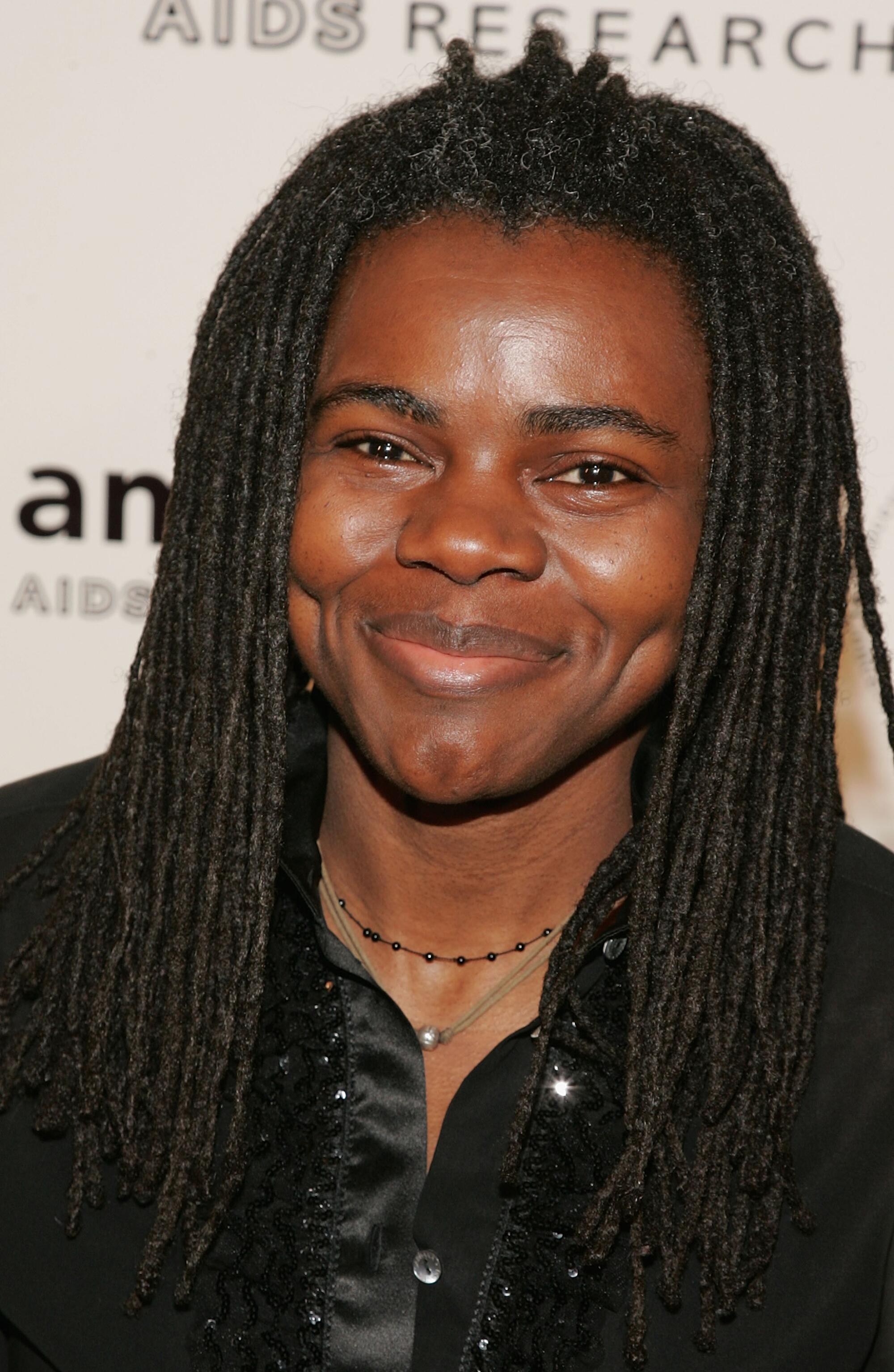
Tracy Chapman’s 1988 song “Fast Car” helped propel her into the limelight. This year, country-music star Luke Combs scored a chart-topping hit with his cover version of it.
(Getty Images)
A few of my favorite examples include Cassandra Wilson’s splendid, slow-as-molasses 1993 reading of Van Morrison’s 1971 classic, “Tupelo Honey,” Lake Street Dive’s New Orleans-infused 2013 version of The Jackson 5’s propulsive 1969 hit “I Want You Back,” and Alison Krauss’ luminous 1999 rendition of the 1988 Keith Whitley hit “When You Say Nothing at All.” I could easily cite dozens more.
A number of artists have recorded multiple cover albums. They range from Linda Ronstadt and Rod Stewart’s respective mining of chestnuts from the Great American Songbook to indie-rock favorite Cat Power. She has thus far released three albums — 2000’s “The Covers Record,” 2008’s “Jukebox” and last year’s “Covers” — devoted to songs by other artists.
Of course, all of Ronstadt’s albums have in effect been cover albums. Like some of the other great singers of the 20th century — from Ella Fitzgerald and Frank Sinatra to Elvis Presley and Whitney Houston — the now-retired Ronstadt was a vocal artist, not a songwriter.
Their gift was their ability to put a distinctive stamp on whatever they sang — and to do it so effectively they made the words and music of other artists indelibly their own.
That was a trademark of the incomparable Ray Charles. After composing and singing such classics as “What’d I Say,” “Hallelujah I Love Her So” and “I Believe to My Soul,” he stopped writing songs by the late 1960s. But no matter.
His towering performances of Hoagy Carmichael’s “Georgia on My Mind,” Percy Mayfield’s “Hit the Road, Jack,” Bobby Sharp’s “Unchain My Heart,” Katharine Lee Bates and Silas G. Pratt’s “America, The Beautiful,” Hank Williams’ “Your Cheatin’ Heart” and many more have long been synonymous with Charles’ name.
‘What can I add to it?’
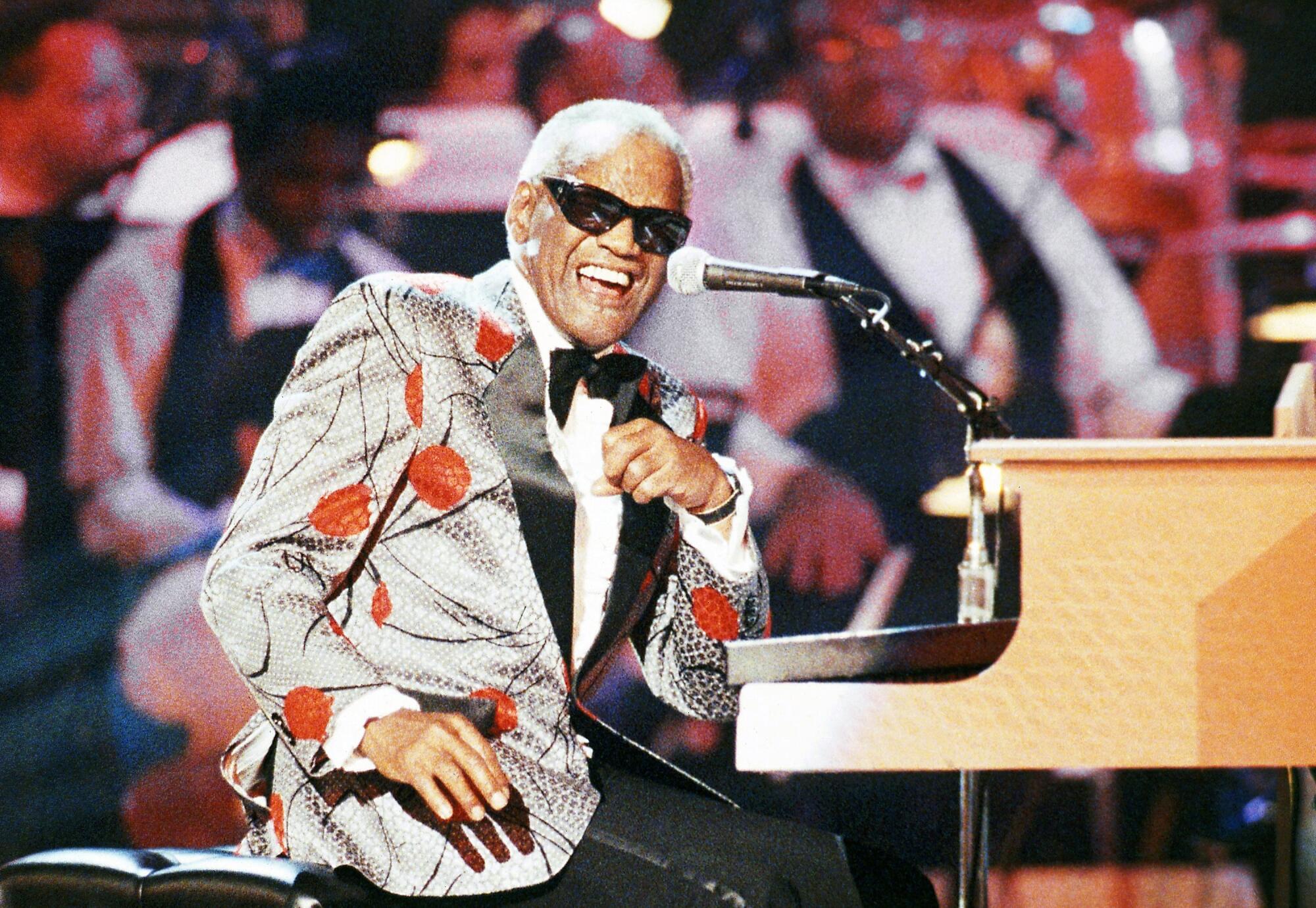
Ray Charles made every song he didhis own, no matter who wrote or first performed it. “If I can’t do something (different) with it, what’s the point?” he asked in a 1985 San Diego Union interview.
(ASSOCIATED PRESS)
“The song (by another artist) already speaks for itself,” Charles noted in a 1985 San Diego Union interview. “If I’m going to do it, I think, ‘What can I add to it to make it mine?’ If I can’t do something (different) with it, what’s the point?”
One need only listen to the seemingly countless cover versions of The Beatles’ “Yesterday,” the Bing Crosby staple “White Christmas,” the Elvis Presley hit “Love Me Tender” or Dolly Parton’s “Jolene” to appreciate how many cover versions not only add nothing to the originals but fall far short of them.
That’s why some performers have opted to take songs by other artists in a completely unlikely direction, so much so that even devoted fans — or the original artists themselves — may not initially recognize what they are hearing.
Witness Tori Amos’ ruminative 2001 piano-ballad twist on Slayer’s 1986 thrash-metal anthem, “Raining Blood.” Or consider the Stanley Clarke Band’s biting 1985 hip-hop transformation of Bruce Springsteen’s often-misinterpreted 1984 anthem “Born in the U.S.A.”
Then there’s Miles Davis’ heady, vocal-free version of the 1969 Crosby, Stills & Nash ballad “Guinnevere,” which the jazz trumpet giant stretches to nearly five times its original 4-minute-plus length. (Jazz has long thrived on extending and reinventing existing songs; I could easily devote another article to my favorite jazz cover versions.)
And don’t forget Devo’s wonderfully herky-jerky 1977 take on “(I Can’t Get No) Satisfaction” — which in 1965 gave the Rolling Stones their first No. 1 single in the U.S.
The Stones, incidentally, started off as a cover band playing American blues, rock and R&B chestnuts. So did The Beatles, The Animals, The Yardbirds and an array of other British Invasion-era English groups from the 1960s.
Six of the 14 songs on The Beatles’ 1963 debut album were cover versions. So were all but two songs on the Stones’ 1964 debut album.
Both bands quickly transitioned to writing nearly all their own music. By doing so they helped set the template that serious rock artists needed to create original works, not copy the work of others. It was only after David Bowie and Roxy Music singer Bryan Ferry released all-covers albums, both in 1973, that a new cachet for such projects began to grow.
Today, tribute bands are thriving — at least commercially speaking — around the world by exclusively performing cover versions of songs by a single group or solo artist. In a music world now dominated by TikTok, YouTube and other social media sites, a gazillion or more videos of cover songs performed by people with greatly varying abilities is just a click away. (Justin Bieber, Halle Bailey and Lemon Grove native Conan Gray and San Diego-bred singer-turned-Oscar-nominated actress Andra Day are among those who got their starts doing cover versions online.)
Maybe one day, some of the myriad cover songs posted on social media will be considered classics. Maybe.
In the meantime, here are some of my favorite cover songs but with a key caveat: I could easily pick another completely different batch tomorrow. I have skipped entire decades, simply because it would take at least another Sunday cover story to include most of them. That’s where you come in.
We want to hear from you
Cover me!
What is your all-time favorite cover song, and why? Send your responses to george.varga@sduniontribune.com. Please include your name and where you live (the area, not your full address).
The Byrds, “Mr. Tambourine Man” (1965)
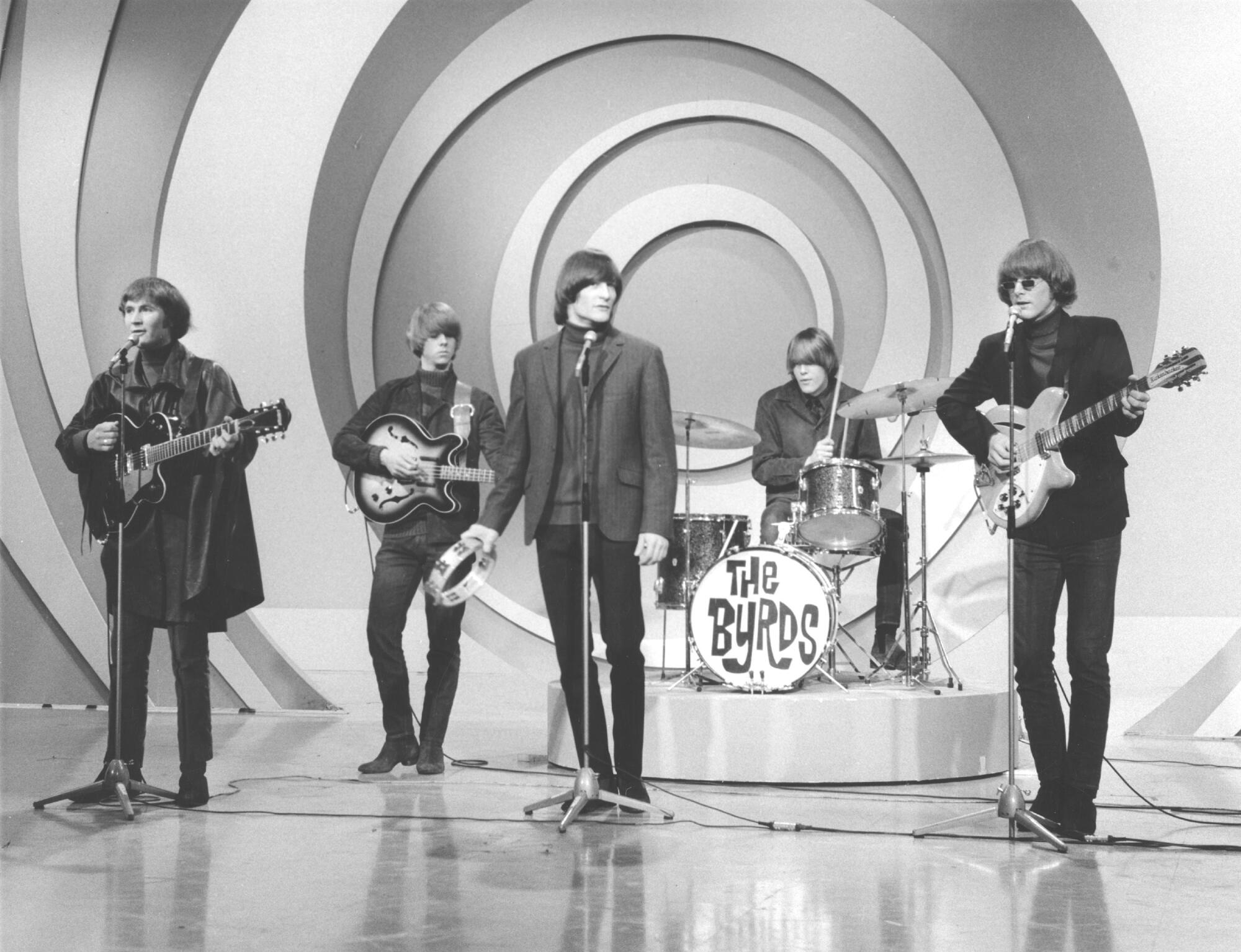
The Byrds are shown in 1965 on TV’s “The Ed Sullivan Show.” From left re band members David Crosby, Chris Hillman, Gene Clark, Michael Clarke and Roger McGuinn, who was then known as Jim McGuinn.
(Michael Ochs Archives)
Can a cover version birth an entire musical movement in just two minutes and 18 seconds? Absolutely!
Released less than a month after the Bob Dylan original, The Byrds took Dylan’s acoustic reverie, “Hey Mr. Tambourine,” added a jingle-jangly 12-string electric guitar, drums, electric bass, keyboards, a buoyant beat (punctuated by a tambourine) and luminous vocals by Roger McGuinn, David Crosby and Gene Clark. Quicker than you can say: “Play a song for me,” folk-rock was born and ignited.
So did the career of The Byrds, whose version gave Dylan his first No. 1 hit as a songwriter and topped the charts in the U.S. and the U.K. More significantly, the success of The Byrds — whose co-founder, Chris Hillman, is a former San Diegan — inspired Dylan to go electric and form a band of his own. The rest is history.
Aretha Franklin, “Respect” (1967)
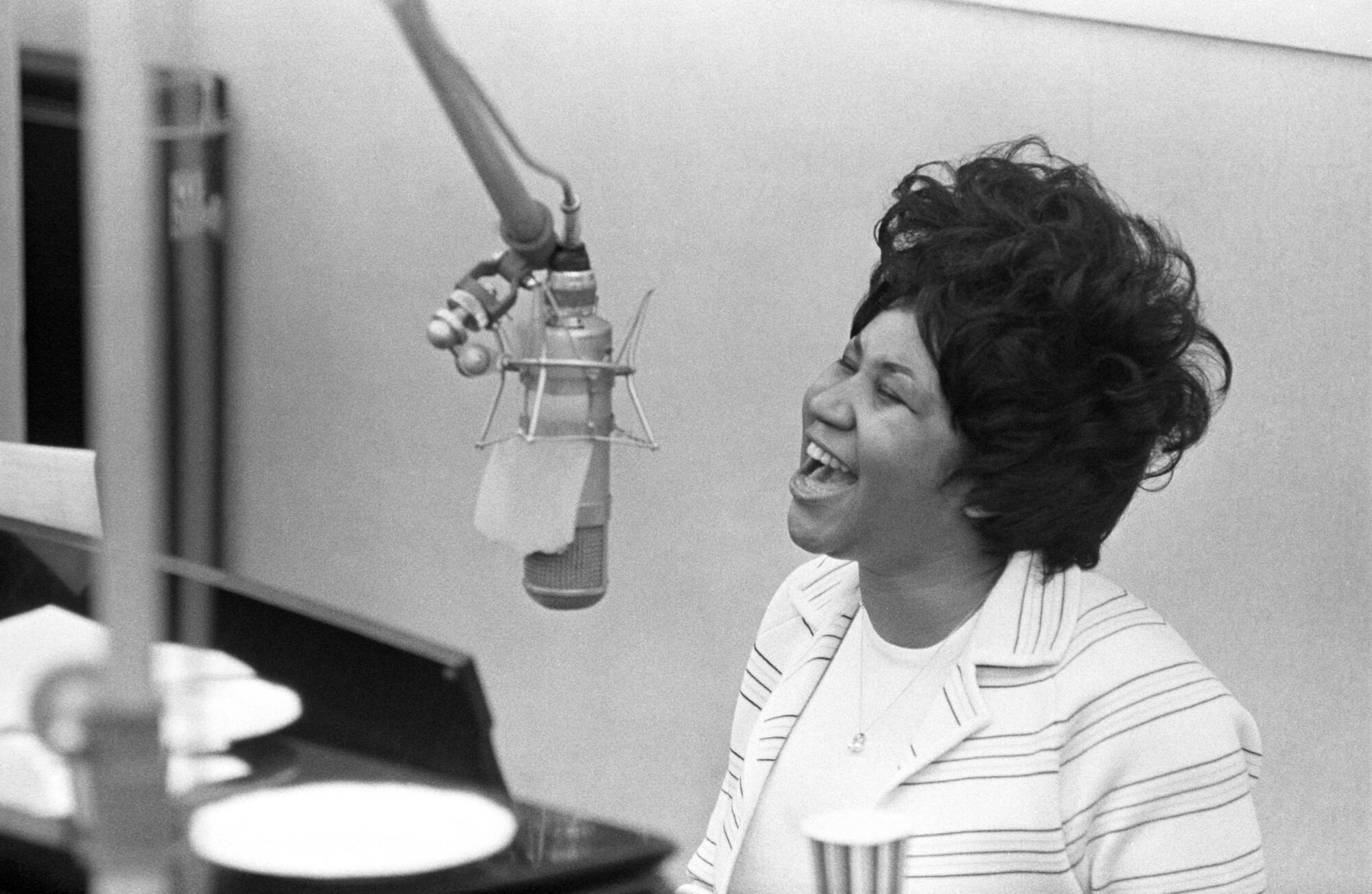
Aretha Franklin is shown at a 1969 recording session in New York City, where she also recorded her classic 1967 cover version of the Otis Redding song “Respect.”
(Michael Ochs Archives)
In one of the greatest musical transformations in modern times, Aretha Franklin turned Otis Redding’s brassy 1965 song upside down and inside out.
The beat and melody are largely the same on both recordings. But where Redding’s original was, in essence, a macho man beseeching his woman to live up to the song’s title, Franklin made “Respect” something else altogether. She added lyrics — including her immortal “Sock it to me!” exhortation and the “Ree, ree. ree, ree” refrain that riffs off her name — and turned it into an anthem for strong women who demanded and commanded equality.
Nearly 60 years later, Franklin’s “Respect” remains her signature song. But it’s only one of the classics first recorded by other artists that she indelibly made her own, as her sublime versions of everything from “I Say a Little Prayer” and “The Weight” to “Amazing Grace” and “Nessun Dorma” readily attest.
Jimi Hendrix Experience, “All Along the Watchtower” (1968)
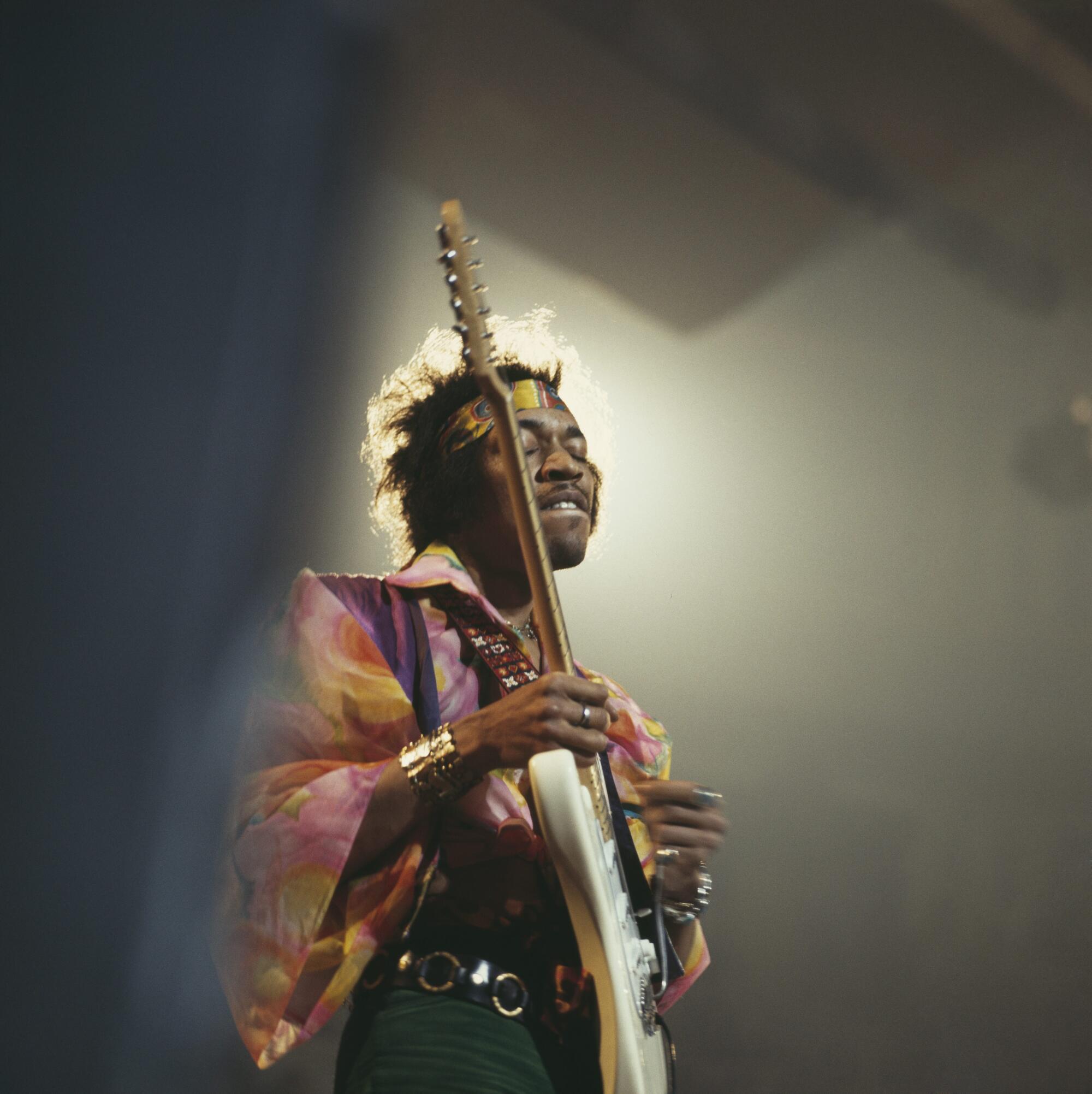
Guitar legend Jimi Hendrix is shown performing at London’s Royal Albert Hall on Feb. 24, 1969.
(David Redfern / Redferns)
Call it musical alchemy or outright magic, but Jimi Hendrix so masterfully reinvented Bob Dylan’s 1967 song, “All Along the Watchtower,” that Dylan himself quickly realized he had been surpassed.
“Ever since (Hendrix) died (in 1970) I’ve been doing it (his way),” Dylan wrote of Hendrix’s version. “Strange how when I sing it, I always feel it’s a tribute to him in some kind of way.” Dylan elaborated on this in 2015 when he was honored as the Grammy Awards’ MusiCares Person of the Year, marveling at how Hendrix “took some small songs of mine, that nobody paid any attention to, and brought them up into the outer limits of the stratosphere, turned them all into classics.”
Hendrix kept Dylan’s biblically derived lyrics and the basic chord progression. But he kicked up the tempo, beefed up the instrumentation, added a glorious six-string opening phrase, sang with more authority than Dylan and transformed the music into a veritable six-string concerto.
The brilliantly crafted electric guitar choruses Hendrix plays after the verses — each with a different feel and tone — enhance the song rather than detract from it. And his mid-song solo is an exhilarating demonstration of his peerless artistry and boundless imagination. It’s less a solo than a magnificent display of music-making as exciting as it is flawlessly executed.
Frankie Miller, “Jealous Guy” (1977)
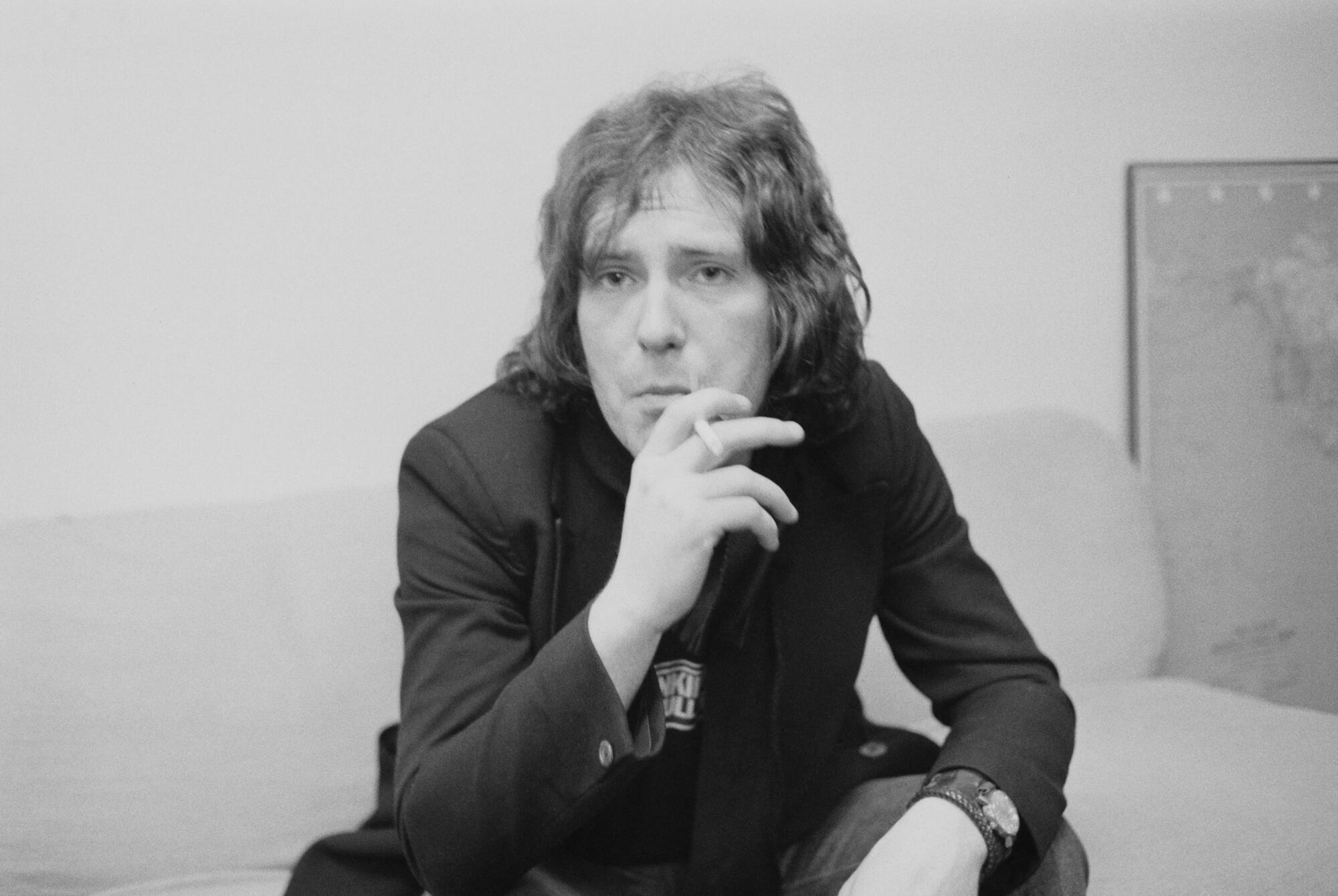
Scottish singer and songwriter Frankie Miller is shown in 1977, the same year his brassy, Otis Redding-styled version of the John Lennon song “Jealous Guy” was released.
(Evening Standard / Getty Images)
John Lennon recorded his largely acoustic song, “Jealous Guy,” in 1971 as an ode to the regret he felt over a failed relationship — and his nostalgic yearning for what might have been. The Bryan Ferry-led Roxy Music had a hit in 1981 with its more overtly melancholic — and orchestrated — remake, which was nowhere as compelling as Donny Hathaway’s soulful 1972 version.
But it is Scottish vocal great Frankie Miller who truly reinvented the song in 1977. In his hands, “Jealous Guy” becomes a brassy 1960s soul-music burner, filled with emotional longing, tension and release. Miller’s version poses an intriguing question: What would the mighty Otis Redding — who died in a 1967 plane crash at the age of 26 — have sounded like reinventing “Jealous Guy” when he was at the peak of his musical powers?
In a word (well, a hyphenated one): Spine-tingling.
“I Got You (I Feel Good),” Run C&W (1993)
The iconic James Brown accomplished many feats in his remarkable career as the Godfather of Soul, a founder of funk and one of the most sampled artists in the history of hip-hop.
What he did not do, to the best of my knowledge, is record an all-acoustic bluegrass album of soul and R&B classics that is both a heartfelt homage and a winking send-up. So, take a bow Run C&W, whose “Into The Twangy-First Century” album improbably features note-perfect bluegrass versions of Brown’s “Please, Please, Please,” Ray Charles’ “What’d I Say,” Rufus Thomas’ “Walkin’ the Dog” and more.
A highlight is what may well be the most uptempo version of Brown’s “I Got You (I Feel Good)” ever recorded. Better yet, it’s done as a mash-up with the Allen Toussaint-penned Lee Dorsey favorite “Working in a Coal Mine.”
The members of Run C&W clearly were singing and playing with their tongues firmly in their cheeks. But the quality of their musicianship turned what could have been a one-joke album into something hip and memorable. The group’s lineup included former San Diego bluegrass mainstay Bernie Leadon, who went on to co-found the Eagles.
Our Native Daughters, “Slave Driver” (2020)

Singer and banjo player Rhiannon Giddens is a 2022 Pulitzer Prize-winner for opera She spearheaded the four-woman group Our Native Daughters, whose 2020 debut album features a memorable version of Bob Marley and The Wailers’ “Slave Driver.”
(Rick Loomis / for the Los Angeles Times/Rick Loomis / for the Los Angeles Times)
Bob Marley and The Wailers included “Slave Driver” on the band’s landmark 1973 album, “Catch a Fire,” but it has long been overshadowed by such oft-covered Marley classics as “Redemption Song” and “No Woman, No Cry.”
“Slave Driver” is a stinging musical examination of the racial inequities that persist more than a century after the Civil War ended. It has rarely been recorded by other artists, apart from such notable exceptions as Taj Mahal, Cyril Neville and original Wailers member Bunny Wailer.
The most moving and original version I have heard so far is by Our Native Daughters, the talent-rich quartet formed by 2022 Pulitzer Prize-winner Rhiannon Giddens. The group teams her with Allison Russell, Leyla McCalla and Amythyst Kiah. All four share and swap vocals on this stirring banjo-fueled adaptation, which seamlessly blurs the lines between reggae and gospel music.
Together, they make “Slave Driver” a song about both lamentation and resilience, oppression and unity. What results is a haunting work that exudes grace and grit in equal measure.
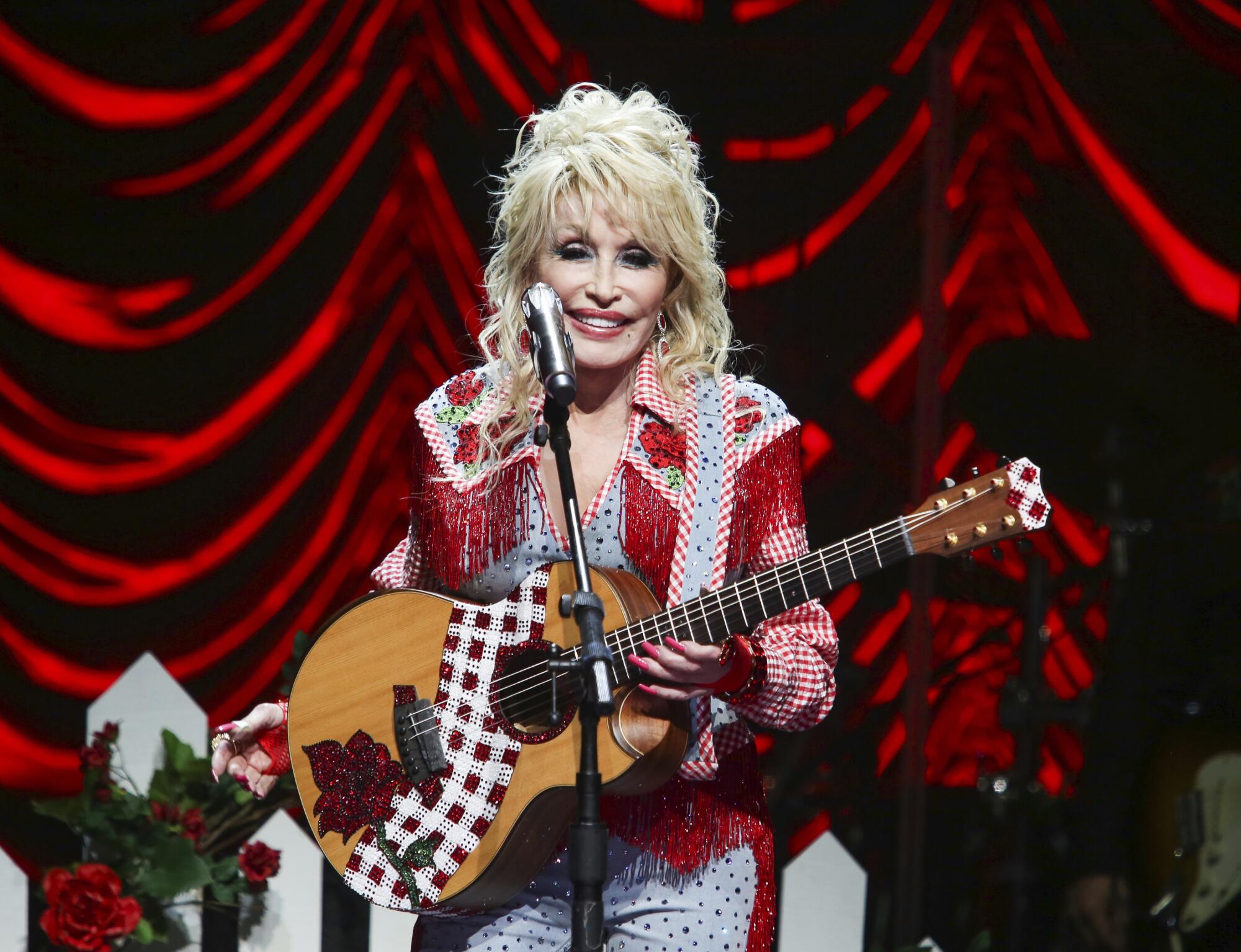
Dolly Parton had a sound reason to not let Elvis Presley record her 1973 song, “I Will Always Love You.” She is shown here performing at the 2022 South by Southwest Music Festival in Austin, Texas.
(Jack Plunkett / Jack Plunkett/invision/ap)
No, Elvis can’t cover my song!
Having a music legend cover one or more of your works can transform the life of a struggling songwriter, as former Valley Center resident JJ Cale happily learned after Eric Clapton had hits in the 1970s with his versions of Cale’s “After Midnight” and “Cocaine.”
But there are some memorable instances of a music legend being rebuffed in their quest to record a song by another artist. And few instances are more memorable than when Dolly Parton declined to let Elvis Presley record his version of Parton’s song “I Will Always Love You.”
Her decision was predicated on business, not aesthetic preferences. Letting Presley cover her 1973 country-music hit would have required Parton to sign her music publishing rights to “I Will Always Love You” completely over to Presley and Col. Tom Parker, Presley’s notorious manager. Parker made the same demand, usually successfully, for everything Presley recorded.
But the prescient Parton, realizing the value of her song, declined. It was a wise decision. In 1992, Whitney Houston recorded “I Will Always Love You” for the soundtrack of her hit film, “The Bodyguard.” It became the biggest hit of her career. Or as Parton told a CMT interviewer in 2006: “When Whitney (Houston’s version) came out, I made enough money to buy Graceland!”
Parton remains one of the most prolific songwriters in country music or any other genre. However, her next album, “Rockstar,” features 30 selections, only two of which are by her. The rest are her covers of classics by The Beatles, Rolling Stones, Blondie, The Police and others that team her with founding members of those bands.
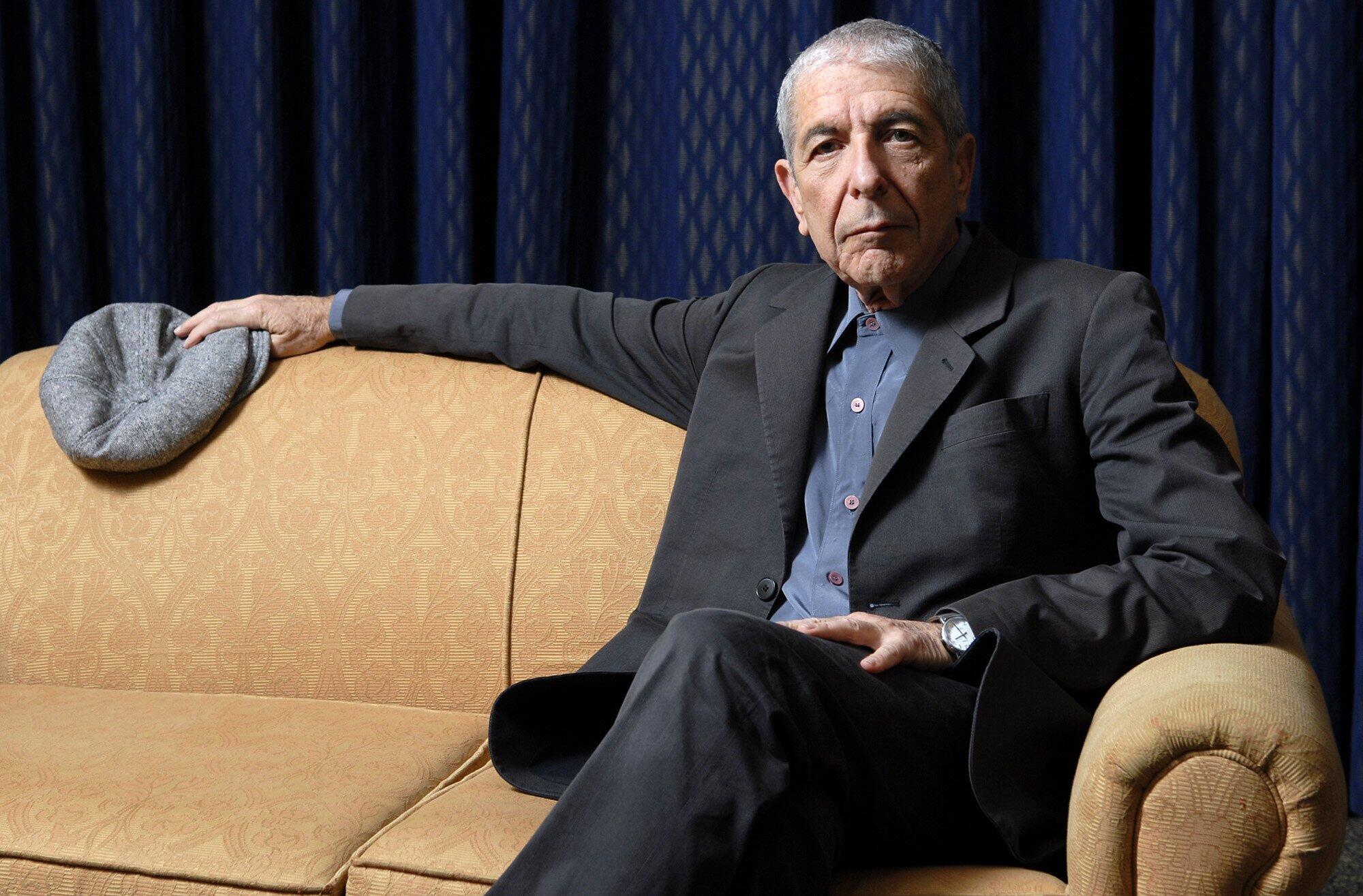
The late Canadian singer-songwriter Leonard Cohen is shown here in Toronto in 2006. He is the subject of the film documentary “Hallelujah: Leonard Cohen, a Journey, a Song.”
(Aaron Harris / Associated Press)
Hallelujah! Obscurity to ubiquity
Leonard Cohen’s “Hallelujah” did not sound remotely epic when it appeared on 1984’s “Various Positions,” an album his American record company deemed so inferior it refused to release it. Cohen’s gruff vocals, more spoken than sung, made the song sound better suited to a barroom floor than a cathedral.
Velvet Underground co-founder John Cale recorded a more appealing, piano-based version in 1991 that was featured in the smash 2001 movie “Shrek.” Cale’s version inspired Jeff Buckley’s 1994 version, which pared down the 80 (!) verses Cohen originally wrote to a far more manageable four.
Buckley, who died in 1997 at the age of 30, gave “Hallelujah” an impassioned vocal grandeur. His majestic version became a posthumous hit in 2007. It also provided the template for countless inferior versions by contestants on “American Idol” — and seemingly every other TV vocal competition show in the Western world. And it begot the title of the 2021 film documentary, “Hallelujah: Leonard Cohen, a Journey, a Song.”
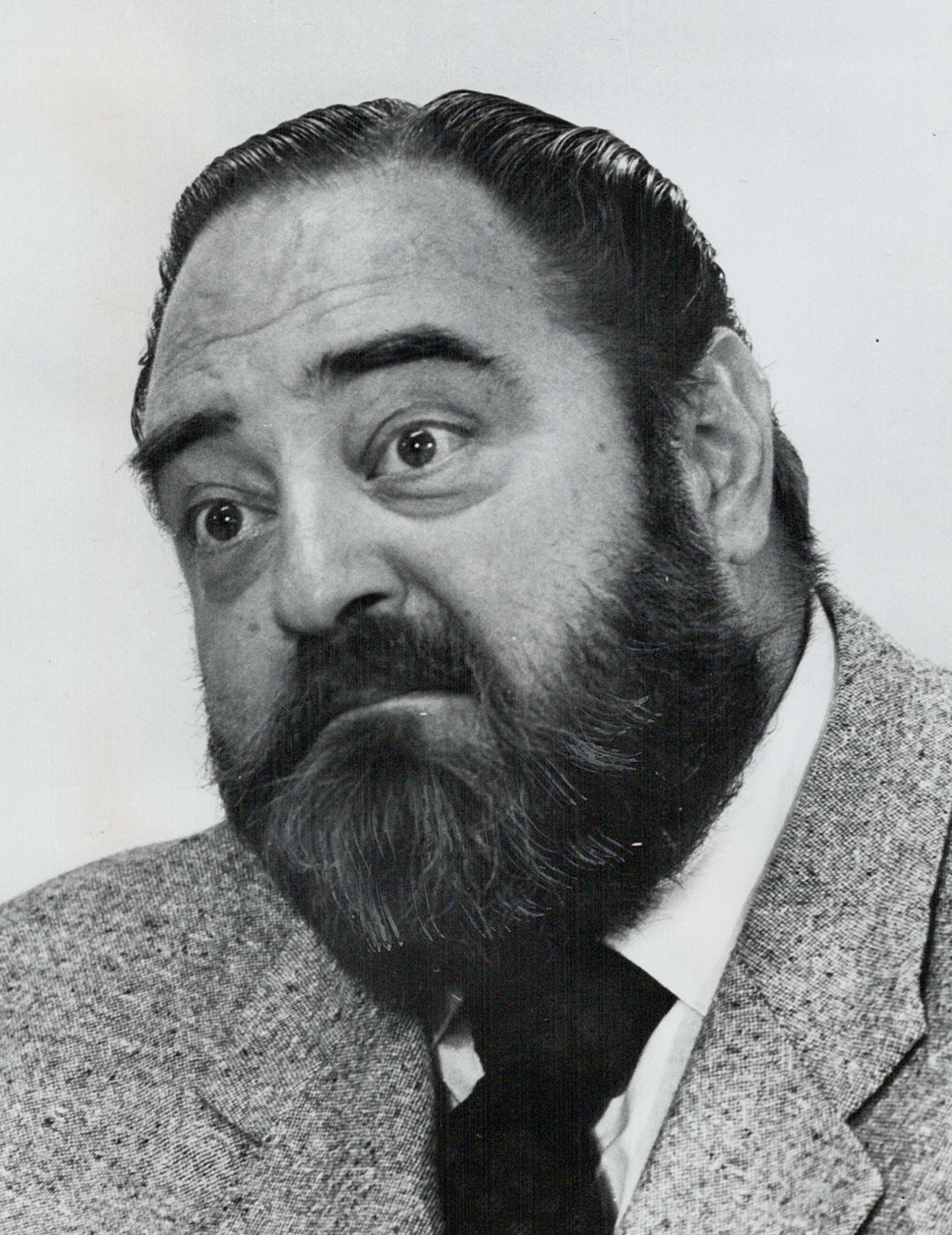
Actor Sebastian Cabot starred in the 1960s TV series, “Family Affair.” Few recall his little-heard album of orchestrated Bob Dylan covers.
(Doug Griffin / Toronto Star via Getty Images)
Most surreal cover song, ever?
British actor Sebastian Cabot is best remembered by American baby-boomers for his role as Mr. French in the CBS TV sitcom “Family Affair,” which aired from 1966 to 1971.
Few, thankfully, recall his 1967 release, “Sebastian Cabot, Actor/Bob Dylan, Poet,” which featured him doing pompous, quasi-Shakespearean recitations of the lyrics to 11 Dylan classics. Better yet — and just as questionable — are the orchestrations, by Irvin Spice, an arranger who appears to have had little, if any, familiarity with Dylan’s music.
While the entire album is exquisitely awful, it is Cabot’s preposterously over-the-top reading of “It Ain’t Me Babe” that stands out. It is such a howler that San Diego International Film Festival founder Gregory Kahn and San Diego Reader music critic John D’Agostino both choked on their food when I played it for them at a Thanksgiving gathering in the 1980s. And it is such a howler that it ended up being featured on the 1992 Rhino Records compilation album, “Golden Throats: The Great Celebrity Sing Off.”
"original" - Google News
October 15, 2023 at 08:00PM
https://ift.tt/2pRlTwr
Can a cover song be better than the original version? Absolutely! Here are six of the all-time best - The San Diego Union-Tribune
"original" - Google News
https://ift.tt/ud9Gxig
https://ift.tt/blxF9kJ
Bagikan Berita Ini














0 Response to "Can a cover song be better than the original version? Absolutely! Here are six of the all-time best - The San Diego Union-Tribune"
Post a Comment